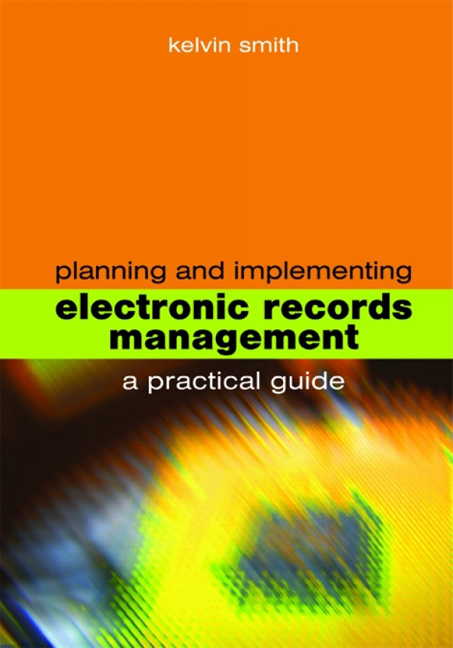9 - Access
from Part 2 - Design
Published online by Cambridge University Press: 08 June 2018
Summary
This chapter briefly examines the subject of access in the context of electronic records – in particular accessibility, usability and security. While the basic principles are the same as those for paper records, there are some aspects that need particular attention when designing electronic records management systems. One of these is the redaction of electronic records and this subject is discussed in some detail.
General context
Public access to the records of public authorities is a fundamental right in a democratic society, but in the private sector access is usually restricted to people working for the particular business and, in some cases, to its shareholders. In general, access principles should focus on ensuring that the users of records and archives are clear about their rights and responsibilities. These may be enshrined in legislation – primary or secondary – or in policy statements. Ironically, in most of these cases access is actually about restrictions on access. For example, the UK Freedom of Information Act 2000 has one section providing a statutory right of access to information from public authorities and 23 sections of exemptions to that right; Companies Acts restrict access to certain types of information; and privacy legislation will allow you to see your own personal records but not those of anyone else.
There is, of course, a strong relationship between preservation and access. A major objective of preserving electronic records and information is to make them accessible for future generations. In the electronic environment it is usually beneficial to make preservation and access decisions at the same time. For example, there may be good technical and pragmatic reasons to separate an access copy of an electronic record from a preservation copy when it passes from active use. As we saw when discussing preservation issues, new manifestations of electronic objects will need to be made as systems change or are upgraded. The deposited object may need to be kept for audit or legal reasons.
Accessibility
Records and information are made available for three main reasons:
• to meet statutory, regulatory or litigation requirements (broadly defined as accountability)
• for business reasons (operational)
• to meet the research needs of other parties, usually the public (social).
- Type
- Chapter
- Information
- Planning and Implementing Electronic Records ManagementA practical guide, pp. 145 - 158Publisher: FacetPrint publication year: 2007



